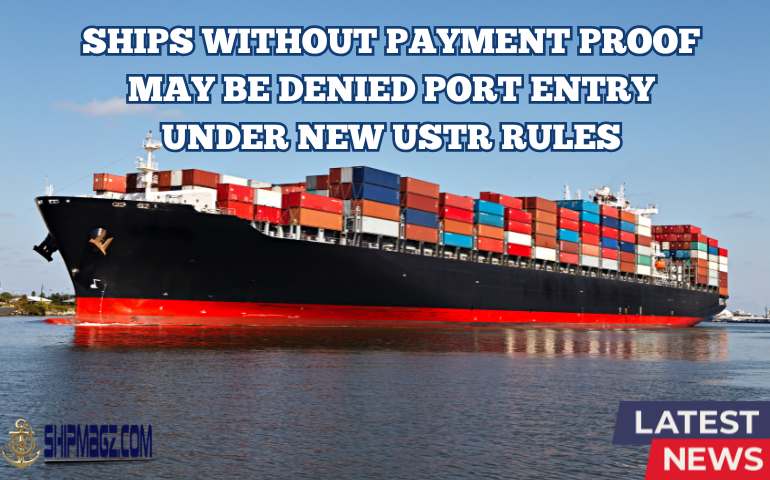Ships without payment proof may be denied port entry under new USTR rules

Background & Regulatory Change
In response to concerns about China’s dominance in shipbuilding and maritime logistics, the U.S. is enforcing new trade rules under the USTR’s Section 301 investigation. These rules target vessels built, owned, or operated by Chinese entities in order to level the playing field.
What the New Rule Requires
- Effective date: 14 October 2025
- Vessel operators must pay applicable port fees ahead of first port entry into the U.S.
- These fees vary by vessel type and nationality:
• Chinese-owned/operated vessels: US$50 per net tonne
• Chinese-built vessels: US$18 per net tonne or US$120 per container discharged, whichever is higher
• Vehicle carriers / Ro-Ro: US$14 per net tonne
• LNG tankers are exempt
Compliance & Payment Process
Payments must go through the U.S. Treasury’s Pay.gov portal and be confirmed in the Vessel Entrance and Clearance System (VECS) before entry. The CBP (Customs and Border Protection) recommends completing payments at least three business days beforehand to avoid delays.
Enforcement & Risks
If a vessel fails to present proof of payment, it may be denied loading or unloading services at U.S. ports. The responsibility for identifying whether a vessel is subject to the fee lies fully with the vessel operator, not the U.S. agency.
Strategic Impacts & Industry Reactions
- This puts pressure on Chinese maritime operators to ensure full transparency and compliance.
- Vessels operating in global trade may see increased administrative burden and risk.
- The fees and enforcement could influence freight routing decisions, vessel registration, and operating models.
- It underscores the growing intersection of trade policy and maritime operations.










